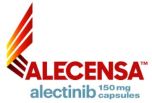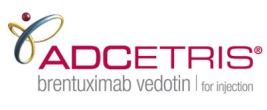
 ZELBORAF (vemurafenib) Tablet
ZELBORAF (vemurafenib) Tablet
Hoffmann-La Roche, Inc./Genentech, Inc.
INDICATION: Treatment of patients with Erdheim-Chester Disease (ECD) with BRAF
V600 mutation
ADDRESSING UNMET NEED:
- ECD is slow-growing blood cancer that originates in the bone marrow; very limited life expectancies
- Rare cancer with no approved therapies
- Application of knowledge of underlying genetic characteristics of certain malignancies to other cancers
REGULATORY PATHWAY: sNDA
- First approval in 2011 for wild-type BRAF melanoma
- Priority Review, Breakthrough Therapy, Orphan Drug
EFFICACY:
- Open-label, multicenter, single-arm, multiple cohort study, patients ≥ 16 years of age with non-melanoma BRAF V600 mutation–positive diseases, n=22
- Endpoint: Best overall response rate maintained on two occasions at least four weeks apart, assessed by RECIST v 1.1
- Responders: 54.5%, Complete Response in 1, Partial Response in 11, Median time to response of 11 months
SAFETY:
- Severe side effects: Development of new cancers, growth of tumors in patients with BRAF wild-type melanoma, hypersensitivity reactions, severe skin reactions, heart abnormalities (QT prolongation), liver damage, photosensitivity, severe reactions in the eye, immune reactions, kidney failure, thickening of tissue in hands and feet, harm to fetus
- Common side effects: Arthralgia, maculo-papular rash, alopecia; fatigue; change in the heart’s electrical activity (prolonged QT interval) and papilloma
REIMBURSEMENT:
- ICD-10-CM: E88.89
- NDC: 10-digit and 11-digit
- Codes not all-inclusive; appropriate codes can vary by patient, setting of care and payer
 ALECENSA (alectinib)
ALECENSA (alectinib)
Hoffmann-La Roche, Inc./Genentech, Inc.
INDICATION: Treatment of anaplastic lymphoma kinase (ALK)-positive metastatic non-small cell lung cancer (NSCLC) as detected by an FDA-approved test
REGULATORY PATHWAY: sNDA, Fulfillment of postmarketing requirement
- Breakthrough therapy designation
- Accelerated approval in 2015, for second line treatment of ALK-positive metastatic NSCLC
EFFICACY:
- Open-label, randomized, active-controlled, multicenter study, patients with ALK-positive NSCLC as identified by the VENTANA ALK (D5F3) CDx assay, ALECENSA vs. crizotinib, n=303
- Major efficacy outcome: Progression-free survival (PFS) determined RECIST v1.1
- Other: Time to CNS progression, objective response rate (ORR) , duration of response (DOR), overall survival (OS)
- Improvement in PFS: Hazard ratio 0.53 (95% CI: 0.38, 0.73; p<0.0001)
- Estimated median PFS: 25.7 months vs. 10.4 months
- Time to cause-specific CNS also significantly improved
- Confirmed ORR : 79% vs. 72%
SAFETY:
- Most common adverse reactions: Fatigue, constipation, edema, myalgia, and anemia
REIMBURSEMENT:
- Diagnosis: ICD-10-CM: C34.00—C34.02, C34.10—C34.12, C34.2, C34.30—C34.32, C34.80—C34.82, C34.90—C34.92
- Codes are not all-inclusive; appropriate codes can vary by patient, setting of care and payer
 PREVYMIS (letermovir) tablets and injection
PREVYMIS (letermovir) tablets and injection
Merck
INDICATION: Prophylaxis of cytomegalovirus (CMV) infection and disease in adult CMV seropositive recipients [R+] of an allogeneic hematopoietic stem cell transplant (HSCT)
ADDRESSING UNMET NEED:
- >27,000 allogeneic HSCTs/year worldwide (8,500 transplants in US); 65-80% recipients previously exposed to CMV and at high risk for CMV infection
- First drug indicated to help prevent CMV infection and disease in adults who have been exposed to CMV and have received HSCT
REGULATORY PATHWAY: NDA
- Breakthrough Therapy and Orphan Drug designation
MECHANISM OF ACTION: Antiviral drug against CMV
EFFICACY:
- Multicenter, double-blind, placebo-controlled, adult CMV-seropositive recipients
[R+] of an allogeneic HSCT, PREVYMIS vs. placebo, n= 565 - Primary efficacy endpoint: Incidence of clinically significant CMV infection through
Week 24 post-transplant (prophylaxis failure) - Proportion of subjects who failed prophylaxis: 38% vs. 61%
SAFETY:
- Contraindicated with pimozide and ergot alkaloids and in patients receiving pitavastatin or simvastatin when co-administered with cyclosporine.
- Most common side effects: Nausea, diarrhea, vomiting, swelling in the arms and legs, cough, headache, tiredness and stomach (abdominal) pain
 ADCETRIS (brentuximab vedotin)
ADCETRIS (brentuximab vedotin)
Seattle Genetics
INDICATION: Treatment of primary cutaneous anaplastic large cell lymphoma (pcALCL) or CD30-expressing mycosis fungoides (MF) who have received prior systemic therap
REGULATORY PATHWAY: sBLA
- Breakthrough Therapy Designation, Orphan Designation, and Priority Review
- Initial approval in 2011
EFFICACY:
- Randomized, open-label, multicenter clinical trial, patients with MF or pcALCL withe prior therapy, n=131, ADCETRIS vs physician’s choice of methotrexate or bexarotene
- Endpoint: Improvement in objective response rate lasting 4 months (ORR4), complete response (CR) rate, and progression-free survival (PFS)
- ORR4: 56% vs 12% (p<0.001)
- CR: 16% vs 2% (p=0.007)
- PFS: Estimated hazard ratio of 0.27, p<0.001, median PFS of 17 mo.
SAFETY:
- Boxed Warning: Progressive multifocal leukoencephalopathy (PML)
- Most common adverse reactions: Anemia, peripheral sensory neuropathy, nausea, diarrhea, fatigue, and neutropenia
 MEPSEVII (vestronidase alfa-vjbk) injection
MEPSEVII (vestronidase alfa-vjbk) injection
INDICATION: Treat pediatric and adult patients with an inherited metabolic condition called mucopolysaccharidosis type VII (MPS VII), also known as Sly syndrome
ADDRESSING UNMET NEED:
- MPS VII is an extremely rare, progressive condition that affects most tissues and organs; impacts less than 150 patients worldwide
- First drug to be apprived for MPS VII
REGULATORY PATHWAY: BLA
- Fast Track designation, Orphan Drug designation, Rare Pediatric Disease Priority Review Voucher
- 12th rare pediatric disease priority review voucher issued by the FDA
- Postmarketing REquirement: Long term risk of immunogenicity, pre- and post-natal development study, measurement of PD marker
EFFICACY AND SAFETY:
- Clinical trial and expanded access protocols, n=23 , 5 months to 25 years of age
- Dosin every two weeks for up to 164 weeks
- Efficacy endpoint : Six-minute walk test in ten patients
- Mean difference in distance walked relative to placebo: 18 meters, continued improvement and stabilization
- Marked improvement in pulmonary function in 2 patients
- Most common side effects: Infusion site reactions, diarrhea, rash and anaphylaxis
Image Credit: Hoffmann La-Roche, Merck, Seattle Genetics, Ultragenyx